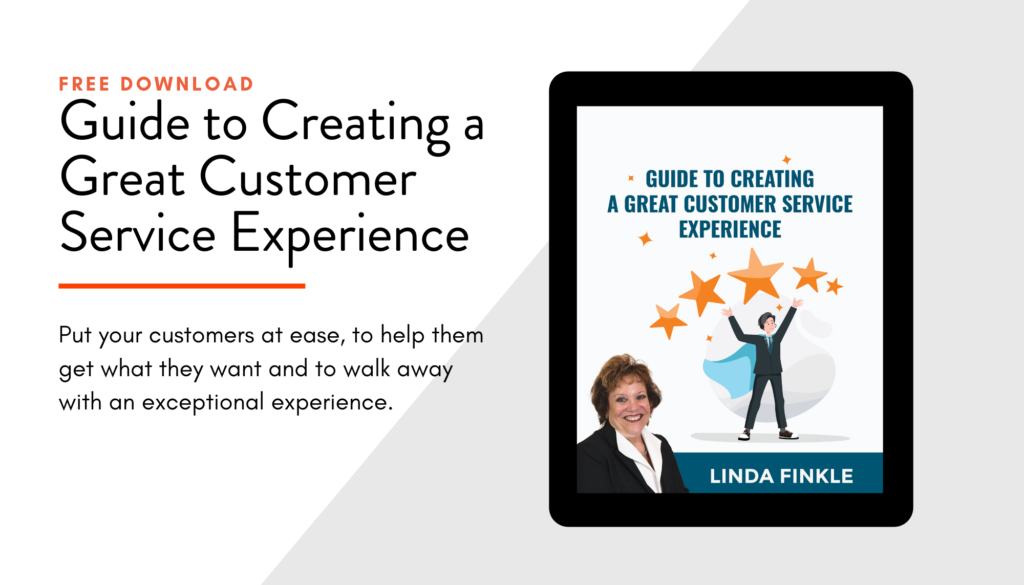4 communication skills that will turn that frown upside down when handling customers.
I’ve said it before and I will say it again, communication is at the center of all relationships!
There is nothing truer than when we talk about communication skills and customer service. I’m sure you’ve heard the expression, “it’s not what you say, it’s how you say it”. So how do you make a customer feel at ease no matter what you are talking about? How do you keep them wanting to come back? There are many factors that affect the success of an interaction with a customer.
The words you use are important. Believe it or not, using the word ‘but’ does have a negative connotation. Anything that comes after the word ‘but’ negates what you said before.
For example:
“I can do that but it will have to be later.”
“Nobody told me but I’ll do it now.”
Consider replacing ‘but’ with ‘and’. I can assure you, you’ll get a better result. The word ‘and’ is inclusive and positive. This leaves the customer on a high note.
Besides ‘but’, consider removing these words and phrases from your customer service vocabulary:
gotcha
ok
uh huh
sure
all right
no problem (unless it’s appropriate for the situation)
wish I could help you
company policy
Some positive alternatives or ideal words/phrases to include are:
my pleasure
certainly
how can I help
what can I do to solve the problem
how can I make you comfortable with…
absolutely
I’ll be happy to
thank you
you are very welcome
Let me give you some examples.
Every company has a company policy, but when speaking about it to a customer, it is best not to say “our company policy is…”; try “we find it works best when…”
With a few small changes to the language, you can leave the customer believing their feelings have been taken into consideration.
Similarly, don’t say “please hold”. Try “may I put you on hold?” (then actually wait and listen to the caller’s response before putting them on hold).
Never use “I don’t know”. The best reply to a question you don’t have the answer to is, “let me double check on that for you.”
Are you starting to see how that lesson your parents may have taught you all those years ago is coming into play now?
Effective communication skills mean you want to choose your words wisely for optimal results.
Speaking of putting people on hold, like I already said, if you must put a customer on hold make sure they have said it was accepted first. Don’t just simply tell them you are putting them on hold.
Should it take more than a minute or two, come back to the customer and let them know the status.
Nothing is worse than a customer thinking you have forgotten about them.
Another word you have to be mindful of is ‘no’. You are eventually going to have to tell a customer ‘no’. Whatever the reason you have to say no to a customer, they aren’t going to be happy.
How they receive the message though is based on how you say it.
No one wants to hear that you can’t do something, but you can’t simply say ‘no’. You must provide an explanation.
Be careful not to make your explanation feel like an excuse. Whenever possible, make a recommendation. If it’s outside your service area (as an example), suggest another way to identify a resource for them.
The best way to not make a customer hear the word ‘no’…is simply to not say it whenever possible. For example:
BAD: “No, I’m sorry. We won’t be able to schedule a visit to your home as we don’t service above the third floor condos.”
BETTER: “I’m sorry. We aren’t able to service condos above the third floor. Have you already contacted other window providers or would you like some recommendations?”
Remember, how you leave a customer, even when you can’t help them, leaves an impression.
Why does this matter? Might they be able to use you in the future? what if they use this experience to recommend you to someone else?
How can you turn that frown upside down? Whenever a customer is unhappy and complains, there are steps you can take to turn an unhappy customer into a happy customer, or a least a less unhappy one.
Step 1: Review the complaint and make sure you understand the situation. Use active listening to ensure you have a clear and complete understanding of the situation.
Step 2: Apologize that it happened. Customers want to know you are listening, are genuinely interested in solving the problem, and know you think they are right — at least in some sense. The examples below demonstrate what NOT to say:
“If what you say is correct, I certainly apologize.”
“I’m sorry to hear that. We have wonderful (insert whatever).”
Step 3: Fix the problem and then follow up. If you can’t fix the problem immediately, or someone else needs to handle the situation, make sure you follow up with the customer to ensure it was handled to their satisfaction.
Step 4: Document the problem and solution so you have a record and can prevent the problem from happening again, if possible.
A happy customer is a returning customer, a customer that refers to your company, and a customer you want.
How you get to a happy customer is a careful marriage of effective communication skills, followed by good service.
Remember, you may not always be able to say ‘yes’ to the person at the other end…but make sure you don’t say ‘no’.
Get the guide to great customer service and master your customer service experience!






